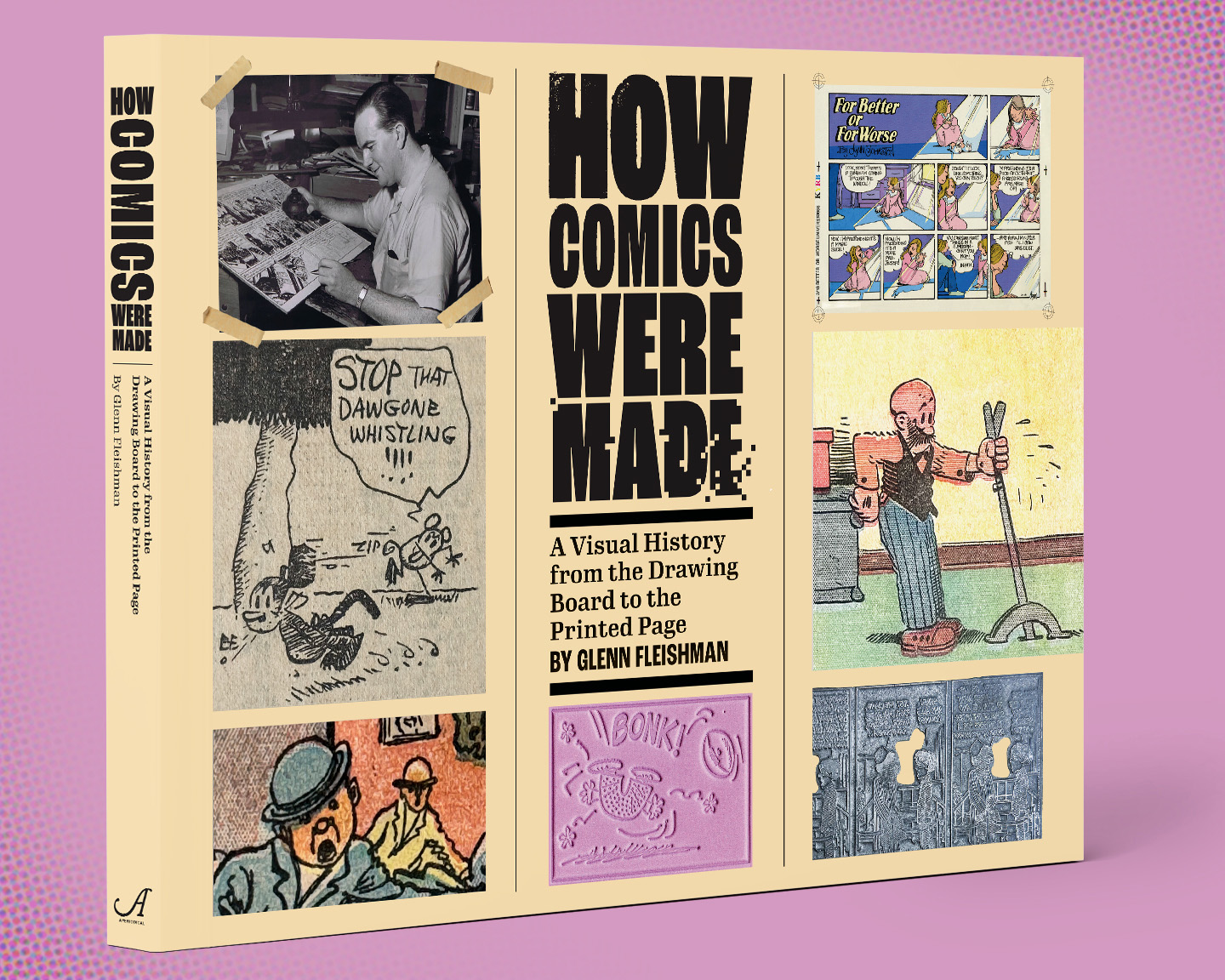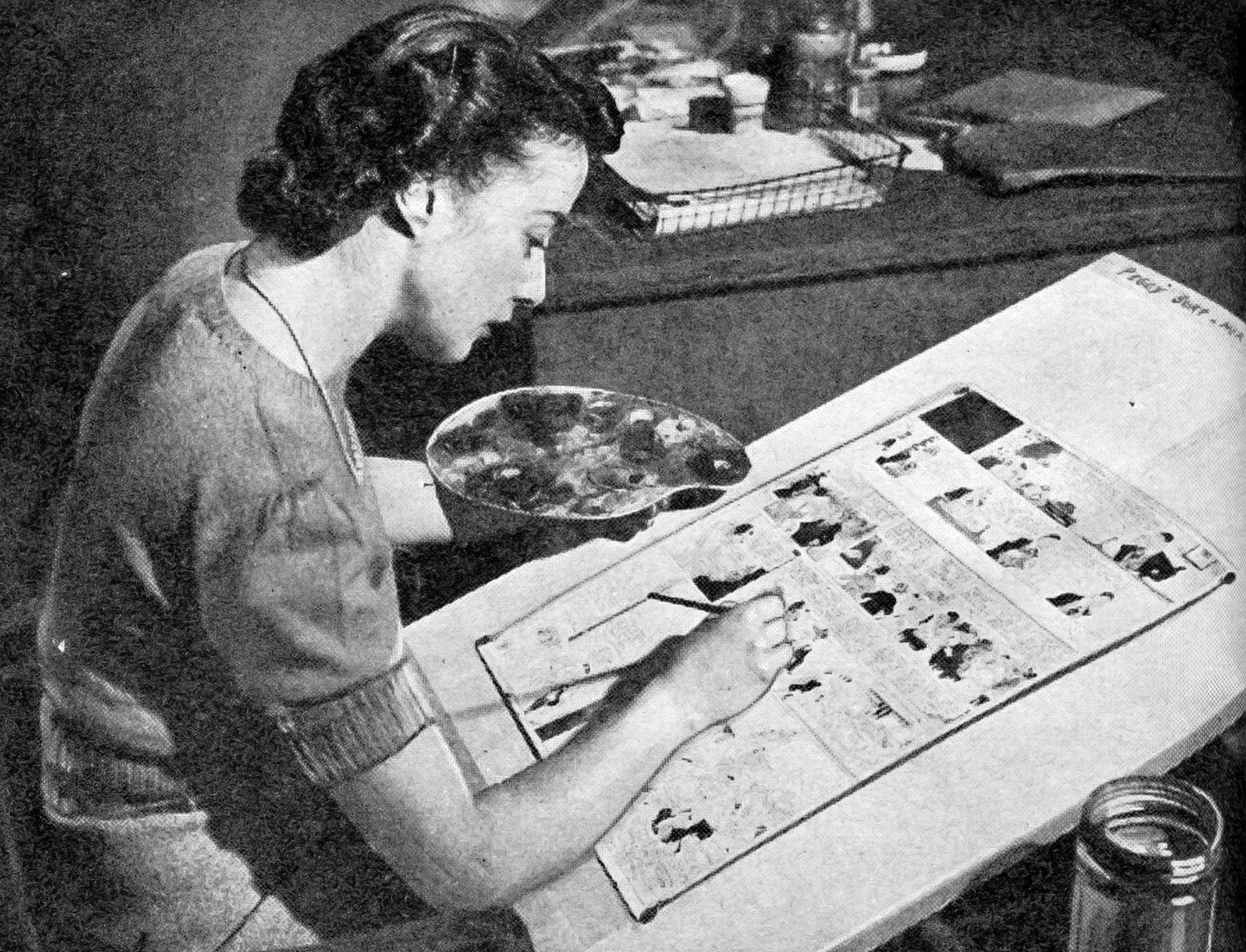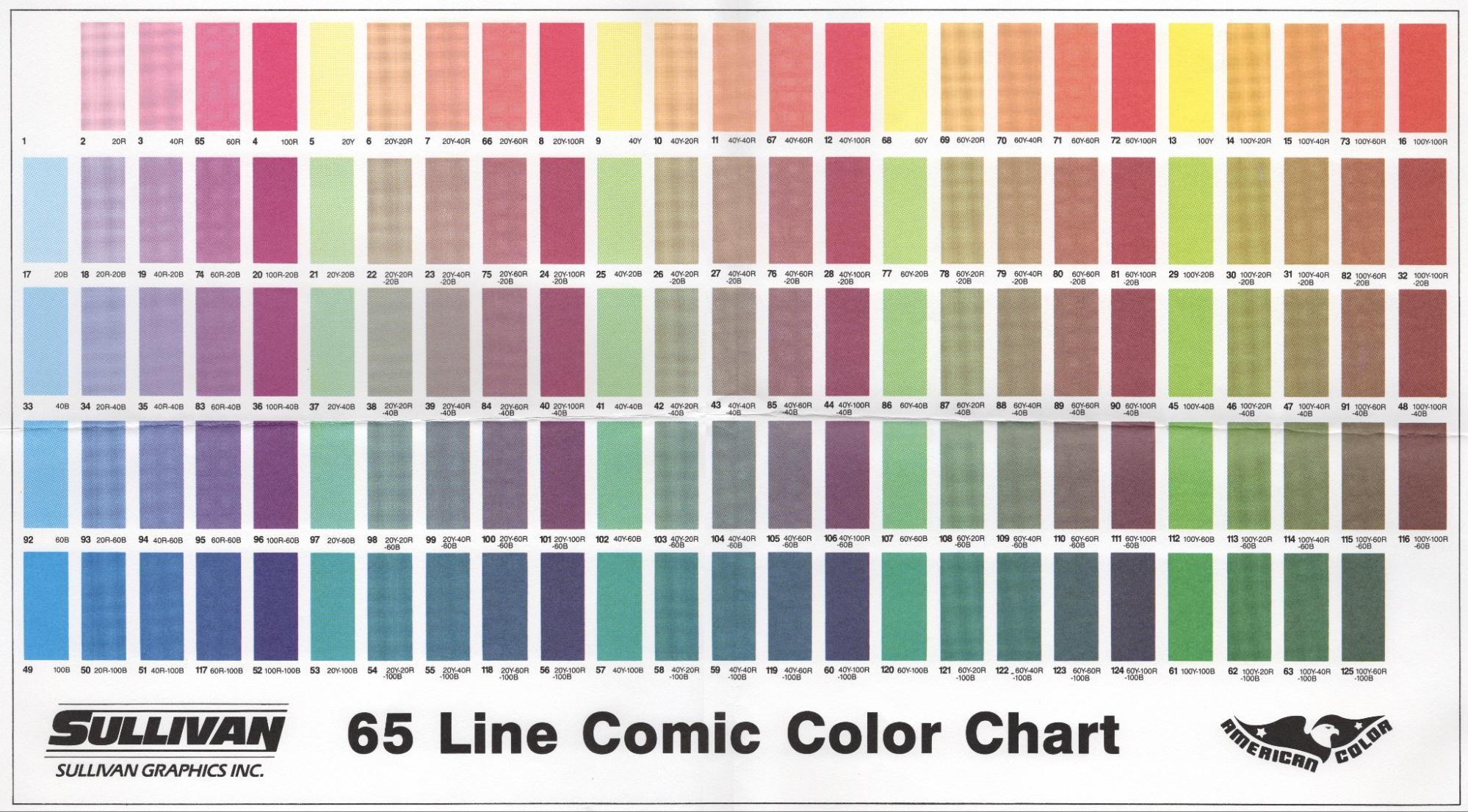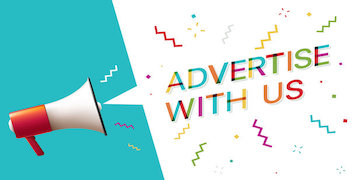MacTalk
April 2024
Newspaper Cartoonists Rely on Digital Tools, but Not as You’d Expect
I spent dozens of hours last fall interviewing newspaper cartoonists about how they draw their work, assuming that many would have adopted modern tools like a Wacom Cintiq tablet or at least a digital stylus paired with something like an iPad. Instead, I was surprised to find that many rely on traditional media, like ink, paint, and watercolor. Even more surprising? Many younger artists, who had the choice of whether to start in analog or digital, work on paper instead of on screen.
I expected that most artists producing daily cartoons would have made a partial or total conversion to drawing and producing their work digitally, thanks to the advantages in time and effort. Perhaps those who started working before the 1990s would largely stick to traditional media, but I reckoned even some percentage of them would have shifted over. But no. While they don’t draw digitally, they’re happy to leverage digital technologies in other ways.
The persistent use of liquid stuff on paper is partly because modern reproduction technology makes it just as easy to work in older media as with digital tools. The ease of scanning, or even taking high-resolution flat photos of analog work, outweighs the seeming advantages of an all-digital workflow for those who prefer the messy, unpredictable, and sometimes frustrating limitations of materials for the physical feedback, happy accidents, and familiarity they provide.
These interviews were part of my multi-year research for a book, How Comics Were Made: A Visual History from the Drawing Board to the Printed Page, that I’m currently crowdfunding with an anticipated ship date late in 2024. My book starts in the 1890s and follows North American newspaper comic production and reproduction to the modern days, focusing on how artists drew their strips and worked their way through the transformations necessary to get artwork onto a newsprint page or digital display.
Help Me, I’m Shrinking!
Because of the contraction in both newspaper circulation and the size (dimensions and page counts) of print newspapers, cartoonists have a harder time reaching a mass audience through a single-point source—the comics syndicate, which used to be the apex of an artist’s career in sequential storytelling outside of comic books. Newspapers still pay a pretty penny to syndicates for comics, but fees are based on reach. With fewer newspapers reaching fewer people in print, syndicate fees have dropped. Plus, as the newspaper business contracts, newspapers are cutting costs everywhere they can, resulting in smaller print formats and thus smaller rectangles in which cartoonists tell their stories. (Online audiences may be huge, but most newspapers’ paywall revenue is modest compared to print, and a tiny amount of that is remitted to syndicates for online cartoon reading.)
From the 1910s to the 1960s, cartoonists like Bud Fisher (“Mutt and Jeff”) and Robert Ripley (“Ripley’s Believe It or Not”) lived like kings. Newspaper pages back then were often 50% larger, and a single Sunday comic could fill the sheet. A reasonable number of those artists made the equivalent in today’s money of over one million dollars a year from syndication fees—and much more when merchandise, plays and musicals, and other adaptations were figured in. Fisher’s annual income of $250,000, revealed in a divorce proceeding, would be $4.5 million today! (The judge remarked, “I do not see how anybody can pay money for that nonsense.”) Ripley made even more and had his own private island. Even a cartoonist with a modest circulation of newspapers could have had a middle-class living.
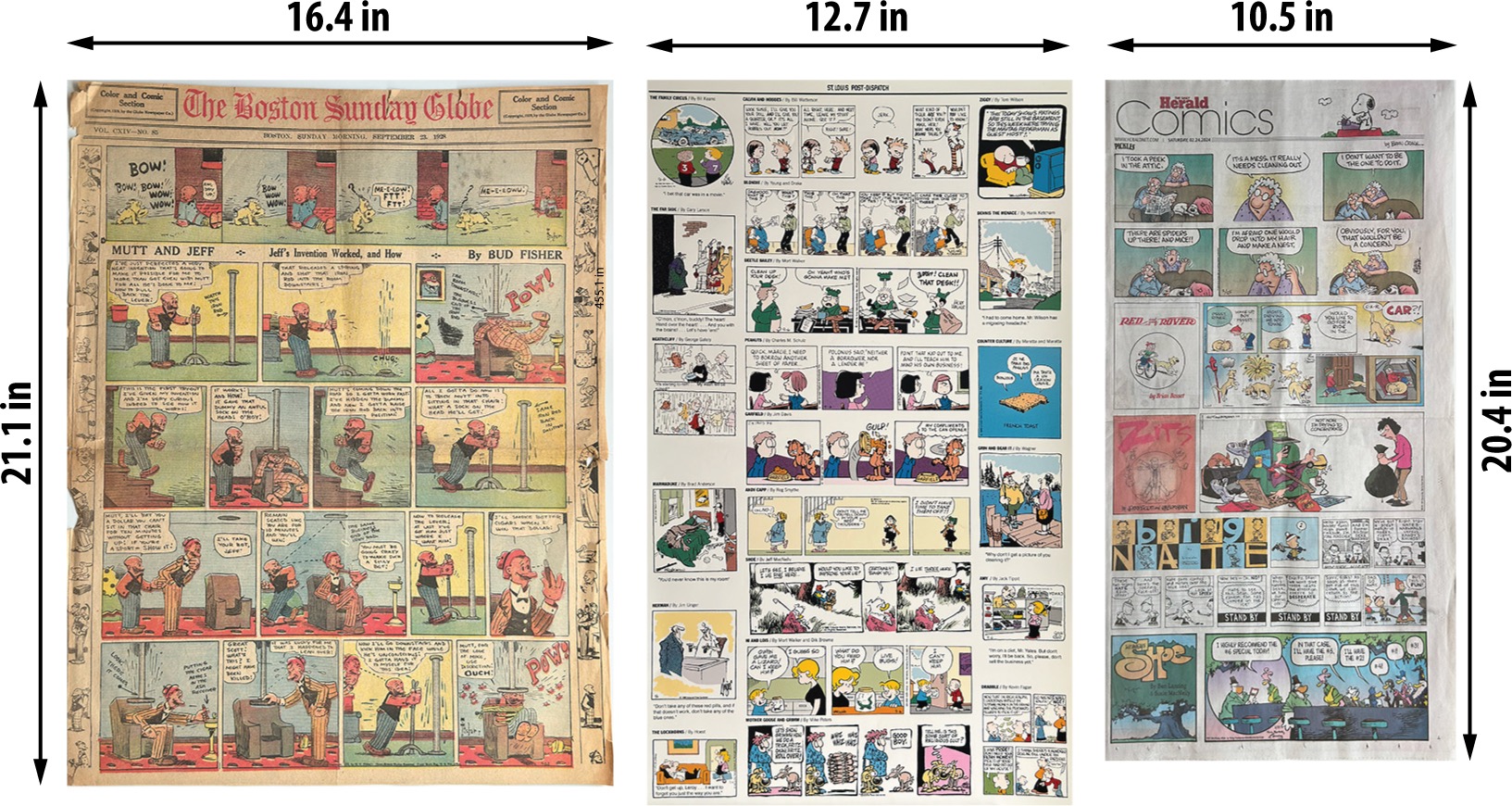
The shrinkage means that today’s cartoonists work as much as they always did for less money. Famous artists of yesteryear like George McManus (“Bringing Up Father”) and Al Capp (the ill-spirited “Li’l Abner” artist) might have had several people handling business, inking their penciled strips, and creating coloring guides for syndicated Sunday comics. Shortly after starting out in 1979, Lynn Johnston (“For Better or For Worse”) had someone who drew in backgrounds and another who handled color so she could focus on writing, penciling, and primary inking, she told me in an interview. But that didn’t last, and today, all but the giants—like Jim Davis (“Garfield”)—are lucky if they can afford to hire any help.
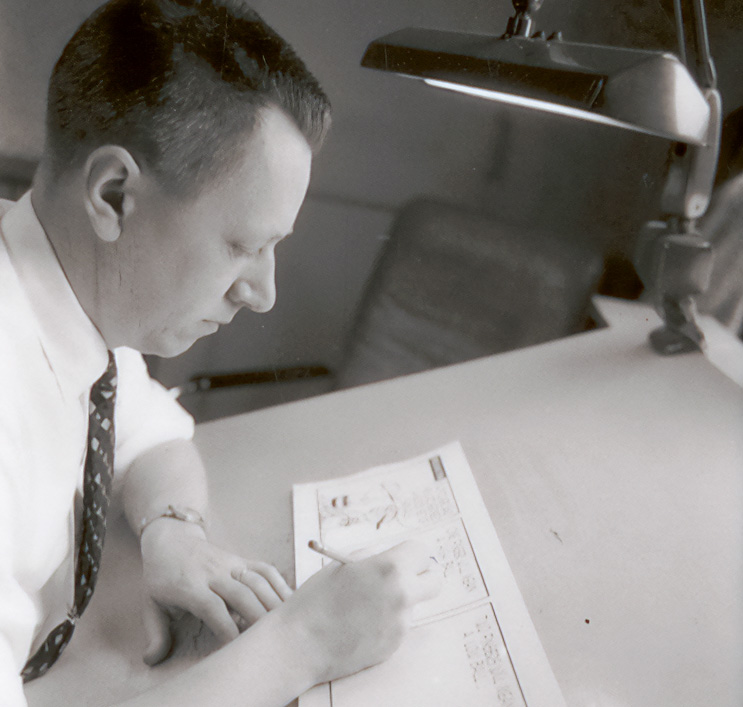
Given that environment, I thought today’s cartoonists would be obliged to go digital—they simply wouldn’t have time for anything else. And with smaller reproduction sizes, the detail they might have sought in drawing by hand on paper might mean less, too. (You can, of course, put infinite detail in when drawing digitally, but it can also be a shortcut to simplicity.) However, many cartoonists remain resolutely conventional while leveraging the best of the available digital options—whether correction, coloring, lettering with a font, or other manipulations.
Cartoonists can bring digital tools to bear in specific ways because they can scan their work and translate it into digital form. While we take scanning for granted, it was transformative for cartooning because it allowed artists to work directly in color for the first time after nearly a century of working indirectly.
One Drawing, Many Outcomes
Before scanning was an option, in the pre-digital days, cartoonists worked entirely in black ink or paints: no grays, no solid colors, no color tints. A cartoonist or a colorist would take a copy of a daily strip or a Sunday color and mark it for gray tints for weekdays and the myriad colors required for the color funnies. Colorists might rely on colored pencils, watercolors, markers, or other materials to indicate colors, but they used a chart provided by the syndicate’s engraving partner or printer to match those colors with numbers, which were written over or pointing to the colored elements.
The comic’s color guide was, in essence, a “paint by numbers” reference for newspapers. Cartoonists advised the syndicate on coloring, and then the syndicates sent out molds or other separated color pieces, and newspapers put them on paper.
However, once scanning became an option, any media could be the starting or finishing point for a comic. I recently conducted a lengthy video interview with Georgia Dunn (“Breaking Cat News”), whose strip has been in print and online syndication for a decade. She began her artistic career working in watercolor but also became proficient in Photoshop while helping her father with photo restoration.

She tried to make “Breaking Cat News” digitally but found it broke her drawing style and fluency. Using digital tools turned out to be inefficient and even maddening. By penciling and using watercolors, she was writing and developing her storylines through her hands, often coming up with the next week’s installment as she drew the current one, though she was unaware of that until she tried to change. She also found lettering by hand on paper provided another chance to review her dialog and was more flexible than prepping spaces into which she would have to drop a digital version of her lettering.
Will Henry, creator of “Wallace the Brave,” also works in watercolors. He described his enjoyment of the process to me:
I take pride in the mistakes in this comic, because when working with a pen and nib, you really get one chance—you can’t wipe some stuff out. If I worked digitally with my personality, I would be doing the line over and over and over again. Absolutely perfect. But one of the things that I think the tools I use and the product I create or the comic I create—I think there’s an overall acceptance of the non-perfect, the imperfect.
When you’re working with the pen and the nib, maybe the pen will grab a little paper and you’ll have a thicker line than you wanted. Or maybe it’s a colder day and the ink is a little thicker, or gravity will pull the ink down to an area you didn’t want. But it works, and things happen that you don’t expect. And it wouldn’t have happened if I wasn’t using the medium.
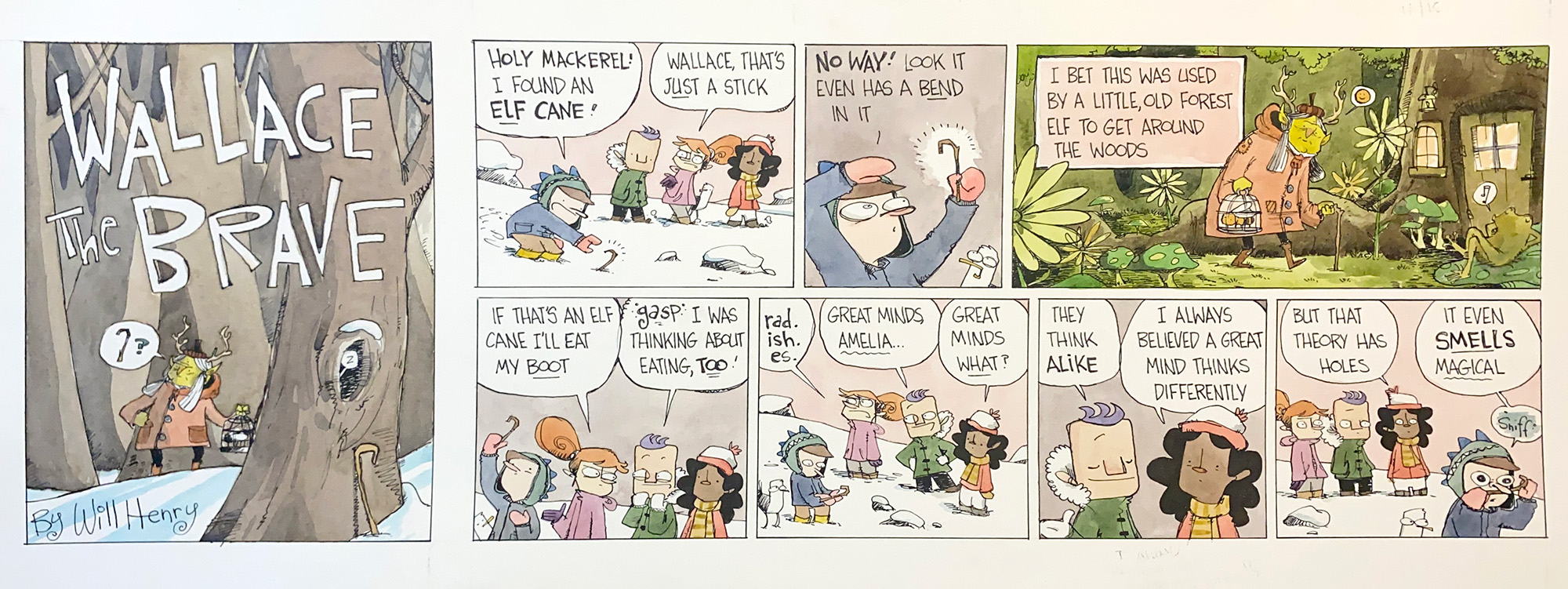
However, neither Georgia nor Will nor any of the many other cartoonists I spoke to who work in traditional media stops there. For instance, Georgia edits after scanning to clean up errors, correct colors, and drop in some elements digitally (like items designed to look typeset), all before previewing her work and sending it off to the syndicate.
Many cartoonists work in a hybrid of old and new: they draw in black ink, scan, and then digitally apply color and lettering. John “Derf” Backderf, who started as a cartoonist in the 1990s and pursued a career through alt-weekly syndication and graphic novels (like My Friend Dahmer and Kent State), said he pencils everything, drawing and letters. But he prefers to use the penciled letters only for placement and sizing—he doesn’t ink them. When he scans his inked drawings, he erases the penciled areas and replaces them with a font created from his lettering.
Most daily cartoons are delivered in both black-and-white and color because some newspapers print their daily and Sunday comics in color; Sunday comics are nearly universally in color.
Digitally sophisticated cartoonists will convert the file into CMYK—the four process colors of cyan, magenta, yellow, and black used for newspaper and most other offset color printing—so they can preview how their color will appear in print. Many, however, rely on the syndicates to handle that conversion and provide feedback when something doesn’t look right.
Even though newspapers still handle the printing, turning a comic into a digital format provides much more end-to-end consistency when it comes out on paper.
Cartoonists Face a Forked Future
The future of newspapers is highly uncertain. Daily newspaper circulation in the United States hovered at around 30% of the US population (units per person) between 1940 and 1973, peaking at around 63 million in 1973. That meant nearly every household received a paper, as did many businesses and libraries, schools, and other institutions. A slow decline followed, picking up steam and accelerating in the 2000s. Now, only an estimated 21 million papers go out every Monday to Friday, less than 6% of the US population and fewer than a fifth of households.
The ongoing drop in newspaper dimensions, page count, and circulation threatens the future of the newspaper comics format, which debuted in the late 1800s and was perfected a few years into the new century. The number of different strips running has plunged, too. Recently, the Gannett newspaper chain took the choice of comics away from local or regional editors, allowing them to pick sets from among 34 strips, which include several popular ones in re-runs with a deceased or retired creator, like “Peanuts” and “For Better or For Worse.” (Only one woman remains in this group: “For Better or For Worse” creator Lynn Johnston, who is universally beloved among other cartoonists but not producing new work.) Gannett’s limited choice of comics has been a boon for some well-known cartoonists and estates, but others I’ve spoken to have lost a quarter or a third of their syndication revenue as a result.
While webcomics are a viable outlet for distribution, supporting both comic-book style and newspaper-style strips along with many unclassifiable efforts, the online medium doesn’t always provide the revenue cartoonists need to make or supplement a living wage. Cartoonists who found themselves on firm footing for years or decades have had to consider how to reinvent themselves. For instance, Jim Keefe, a long-time colorist at King Features who became the artist behind “Flash Gordon” and “Sally Forth,” launched a Patreon to discuss his history in comics, talk about techniques, and post drawings, videos, and artwork. (Jim also has an amazing blog for anyone interested in comics and syndication history.)
Artists who started in webcomics may have a leg up as the field faces a need for new readers, new markets, and new revenue. Modern cartoonists already know that a good portion of their readership is looking at their work on a screen, but even then, rarely at the same size or in the same format. Even the sequential horizontal organization of standard wide or multi-panel daily strips may be reformatted into vertical panel sequences on some displays or websites. Then you have to figure in later reproductions in print and ebook collections. Daily cartoonists might be read on a newspaper’s website, on a syndicate’s site, and on the cartoonist’s site or Patreon campaign, as well as on social media, just on the first day or so of release.
Today’s most agile cartoonists have made multi-destination publishing a major thrust of their efforts. Lex Fajardo, creator of the page-based “Kid Beowulf” young-adult webcomic, first posts on his own site, after which the comics appear at GoComics and are then collected in books. (Lex’s day job is editorial director of the Charles M. Schulz Creative Associates, where he oversees similar processes with “Peanuts” reruns.)
The best news I have about comics is that there are multiple paths forward. Once, syndication was the only way to become a success, which forced cartoonists to use a limited set of traditional media and master technical issues required by syndicates and newspapers. Now, cartoonists can use any media they want, old or new, difficult or easy, analog or digital, and transform their work in myriad ways for publishing in many different channels.
No one suspects a new golden age is around the corner—the number of cartoonists who could make even $100,000 or more per year from their daily work is dwindling to the fingers of a few hands. But where there is art and where there are readers, new comics will bloom. I hope this rich mix of old media and new technology becomes part of the catalyst.
Contents
Website design by Blue Heron Web Designs

